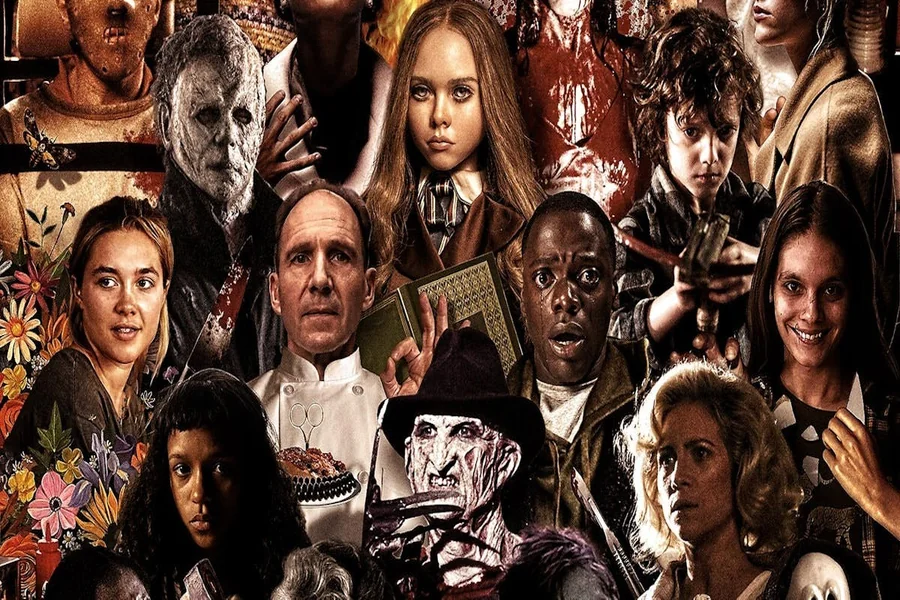Over the past few years, horror movies have seen a surge in popularity. From major blockbuster releases to smaller indie films, the genre is thriving, drawing massive audiences to theaters, streaming platforms, and home media. But what is it about horror movies that continue to captivate audiences in such large numbers? Why has the genre experienced a renaissance in recent times?
Horror has always been a staple of cinema, but recent cultural and social trends have reignited interest in terrifying stories. Whether it’s the psychological thrillers, supernatural horrors, or the return of classic slasher films, the genre has grown more versatile, offering something for every type of viewer. In this article, we will explore the reasons why horror movies are so popular right now, analyzing cultural shifts, technological advancements, and the ways in which horror reflects our deepest fears and anxieties.
1. The Escape from Reality: The Need for Thrills and Adrenaline
One of the primary reasons people are drawn to horror movies is the adrenaline rush they provide. Watching a horror film is a safe way to experience fear and thrill without any actual danger. It’s the same reason why people enjoy roller coasters, skydiving, or other high-risk activities: the fear itself is exhilarating, and it brings a sense of excitement and intensity that can be addictive.
The Catharsis of Fear
Horror movies allow viewers to confront their fears in a controlled environment, which provides a sense of catharsis. By experiencing fear through a fictional story, people can process their own anxieties and anxieties in a safe space. This sense of catharsis can be incredibly satisfying, especially when the film offers a satisfying conclusion or resolution to the tension. For example, the release of suspense and fear in the final moments of a horror movie often leaves audiences with a sense of relief—having survived the terrifying journey with the characters.
The increasing popularity of horror films also ties into society’s collective desire to feel something intense. In a world that can often feel disconnected or mundane, horror offers a way to reconnect with our primal instincts. As emotions like fear are more difficult to access in our everyday lives, horror films provide an outlet to feel those intense emotions—without putting oneself in any real danger.
2. Social and Cultural Reflections: The Horror of the Times
Horror films are not only about supernatural creatures and gruesome killings—they often serve as a reflection of the societal issues and anxieties of their time. In many cases, horror movies act as a mirror to the fears and challenges facing society, making them particularly relevant during times of social, political, or economic instability.
Commentary on Societal Fears
Horror has long been a vehicle for exploring topics like government control, the breakdown of social order, and the fear of the “other.” In the 1950s, for example, many horror films reflected Cold War paranoia and the fear of communism, such as in Invasion of the Body Snatchers (1956), where alien invaders replace humans in a small town. In more recent times, horror has been used to address contemporary social issues like the digital age, surveillance, and inequality.
Take, for example, Jordan Peele’s Get Out (2017), which blends traditional horror with sharp social commentary about race relations in America. The film explores the racial tensions and microaggressions that Black individuals face in predominantly white spaces, all within the context of a horror movie. Similarly, Us (2019), another film by Peele, deals with class and identity issues while blending in psychological horror. This kind of social commentary not only adds depth to the narrative but also makes the film resonate with audiences on a more personal and societal level.
The growing popularity of horror films that reflect societal fears shows that viewers are not only looking for scares but also seeking to engage with the complex world around them. Horror provides a way for viewers to reflect on their own concerns and confront uncomfortable truths in a way that feels cathartic.
The Escape from Reality During Turbulent Times
Horror also provides an opportunity to escape from real-world anxieties. With global issues such as political unrest, climate change, and the COVID-19 pandemic weighing on people’s minds, horror movies allow for an outlet to confront existential fears and uncertainties in a fictional and sometimes exaggerated context. In times of crisis, audiences often turn to horror as a way to cope with their own fears and struggles, finding comfort in knowing that the dangers they see on screen are not real.
During the COVID-19 pandemic, for instance, many people found solace in watching horror films that dealt with themes of isolation, fear, and survival. Films like A Quiet Place (2018) and The Platform (2019) resonated with audiences because they offered a visceral, yet fictional, depiction of a world turned upside down—much like the reality people were experiencing. This sense of shared struggle made these films particularly compelling and emotionally resonant.
3. The Rise of Streaming Services: Horror for All
The explosion of streaming platforms like Netflix, Hulu, Amazon Prime Video, and Disney+ has played a major role in the current horror movie boom. Streaming has made it easier than ever for viewers to access a wide range of films from different countries, genres, and eras. This shift in how people consume content has led to an increased appetite for horror films.
Unlimited Access to Horror Content
Before streaming platforms, fans had to rely on cable TV, DVDs, or movie theaters to watch their favorite horror films. Now, with just a few clicks, they can access a nearly endless catalog of horror content, ranging from classic slasher films to contemporary psychological thrillers. Streaming services offer a more convenient, on-demand option for horror lovers, allowing them to watch films at their own pace, without the limitations of time slots or commercial interruptions.
Moreover, streaming platforms have invested heavily in creating original horror content that appeals to a wide variety of tastes. Shows like Stranger Things, The Haunting of Hill House, and Midnight Mass have drawn millions of subscribers and cemented horror as a major part of the streaming ecosystem. These shows offer a blend of horror with drama, fantasy, and thriller elements, further broadening the genre’s appeal.
Global Horror Reach
Streaming platforms have also contributed to the rise of international horror films, making it easier for global audiences to access titles from different countries. Films like Train to Busan (South Korea), The Platform (Spain), and His House (UK) have found massive success on streaming platforms, demonstrating the universal appeal of horror. The availability of international horror has also expanded viewers’ horizons, exposing them to new cultural perspectives on fear and suspense.
As more platforms embrace the genre, horror films are now reaching audiences who might not have had access to them in the past. This accessibility and global reach have contributed significantly to the genre’s current popularity.
4. The Evolution of Horror: From Traditional to New Subgenres
Horror has evolved over the years, branching out into new subgenres that cater to a variety of tastes. While traditional slasher films and supernatural thrillers remain popular, new forms of horror have emerged that explore psychological, emotional, and existential terror.
Psychological and Existential Horror
In recent years, psychological horror films have gained prominence, focusing on the mind’s ability to create fear. Movies like Hereditary (2018) and Midsommar (2019), both directed by Ari Aster, explore fear that comes from within—whether it’s family trauma, grief, or societal pressures. These films delve into the complexities of the human psyche, creating a slow-burn tension that builds to unsettling conclusions. This more cerebral form of horror appeals to a wider audience, offering a different kind of scare that is both thought-provoking and emotionally intense.
Similarly, films like The Witch (2015) and The Lighthouse (2019) explore existential horror, delving into themes of isolation, madness, and the struggle to maintain one’s sense of self. These films focus on creating an atmosphere of dread and unease rather than relying solely on jump scares or gore.
Supernatural and Creature Horror
At the same time, supernatural and creature-based horror continues to captivate audiences. From alien encounters to demonic possessions, supernatural horror films like The Conjuring series, Insidious, and It Follows tap into universal fears of the unknown. Creature horror, seen in films like The Shape of Water and Annihilation, explores humanity’s fear of monstrous entities, often blurring the line between horror and science fiction.
These subgenres allow for a diverse exploration of fear, catering to different tastes and preferences in the horror audience.
Conclusion: The Lasting Power of Horror
Horror movies continue to be a major force in popular culture because they speak to our deepest, most primal fears. They provide both an escape and a cathartic release, offering an adrenaline rush that can’t be found in other genres. With social and cultural reflections, an expanding global reach through streaming, and a wide variety of subgenres, horror films remain one of the most versatile and enduring forms of entertainment.
Whether it’s the appeal of thrilling, heart-pounding scares, the exploration of societal anxieties, or the ability to connect with complex emotions, horror movies have earned their place at the top of the entertainment landscape. As the genre continues to evolve and adapt to modern tastes, we can expect horror to remain a powerful force in shaping pop culture for years to come.



